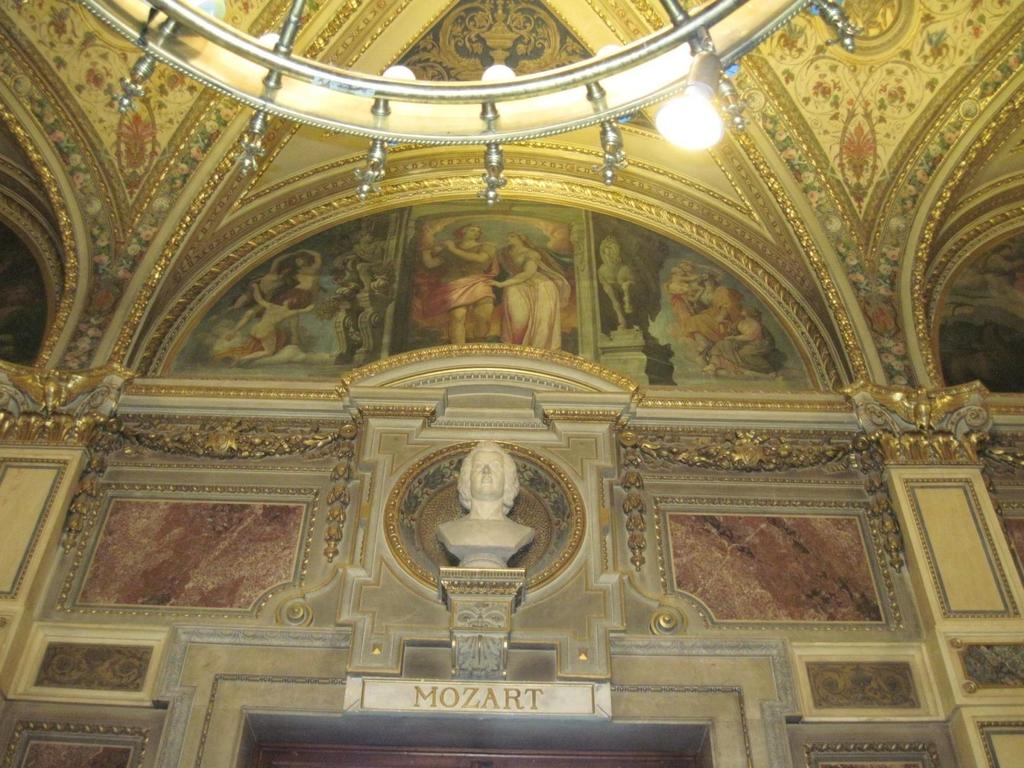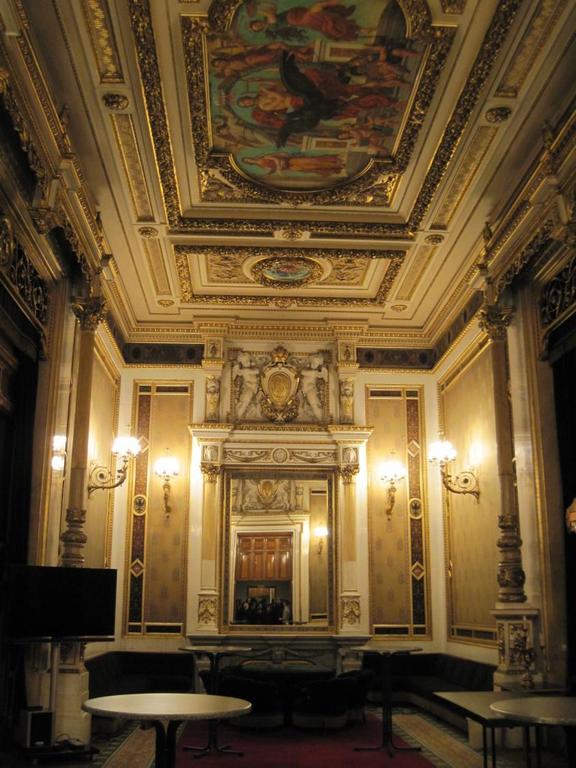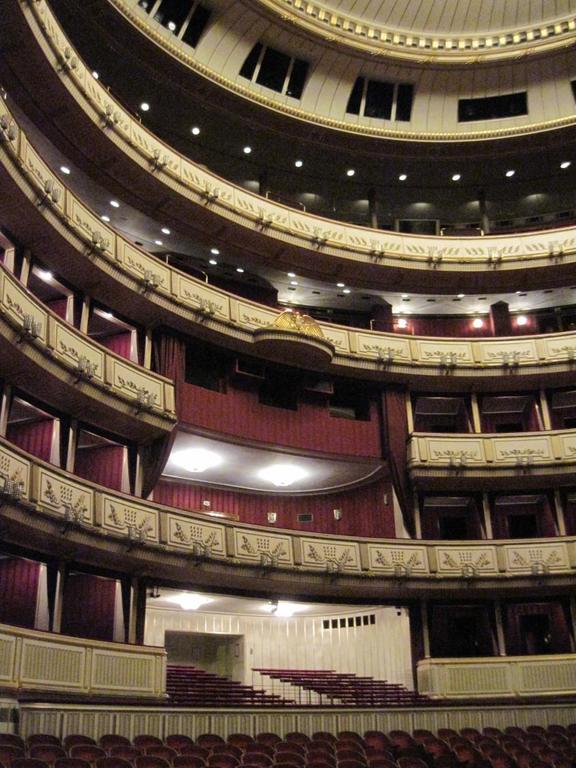Vienna State Opera, or Staatsoper in German, is one of the most established opera houses around the world, comparable to the likes of New York’s Carnegie Hall and the Parisian Opera Garnier. Recognized as the symbol of the Austrian capital, the opera house is famous for various performances written by the world’s finest composers, the annual Opera Ball, as well as its mesmerizing but subtle decoration. The edifice features utmost elegance, and there is a great deal of symbolism to be discovered while touring its halls, lobbies and lounges.
An exterior that bespoke stories

The Vienna Opera House was the first inaugurated building along the Ringstrasse Boulevard in 1869, once the defensive walls encircling the city had been dismantled. It is situated on the intersection of the Opernring and Karntner Strasse, and is easily recognised, thanks to its magnitude and characteristic early Renaissance architecture. Above the main entrance, you can see two equestrian statues, representing Harmony and Muse of Poetry, while on each side of the opera an allegorical fountain is to be discovered. On the right side, the dominating statue of the siren, Lorelei, is supported by Love, Grief and Revenge sculptures, while the fountain on the other side illustrates Dance, Music and Joy. The historical architecture and intricate carvings will appeal even to non-art lovers and prepare you for the grandeur within.
A revelation of art and history within the opera house

Marble interior with ornate decoration welcomes the visitors inside the Opera. Stylish chandeliers, busts of prominent people from the world of art and culture, and elaborate garnish are subtly blended into the rich ambiance. A quick glance reveals two separate marble staircases leading to the first floor; one used to be reserved for the members of the higher social classes, while the other was used by the commoners. If you take a moment on the intermediate level, a couple of interesting things are revealed.
The reliefs above the medallions, portraying ill-fated architects Eduard van der Null and August von Siccardsburg, represent main provinces of the Staatsoper – the ballet and the opera. Further disassembling, through canvas paintings in arches, provides more detailed information about related performances – the ballet, comic opera and tragic opera. The main figure of the ceiling painting illustrates Fortune while delivering gifts. Sculptures adjacent to the intermediate and the first level depict muses and different types of art.
Look out for legendary composers!

The busts on the first floor feature legendary composers. Their masterpieces are illustrated by the paintings over the busts. The ceiling frescoes illustrate scenes from Mozart’s Magic Flute.
Intermission halls, flanking the lobby and the auditorium, are known as the Gustav Mahler Hall and Schwind Foyer. The one to the right of the stairway is named after the one-time director, while another honours Moritz von Schwind, whose exhibited paintings depict famous operas from the past that are rarely performed nowadays.
You might be interested in these Airbnbs!
One of the highlights is the Emperor’s Salon!

The central salon, which used to be the Emperor’s Salon, is another highlight that you do not want to miss. Located on the first floor, next to the Emperor’s balcony in the auditorium, the salon features 22 carat gold leaves that line the walls and ceiling. Can you identify Franz Joseph’s initials that form his coat of arms on the tapestries?
Vienna Tour Guide

Ildiko
Gain greater understanding to operations within the opera house from the backstage

The huge auditorium features over 2000 sitting places, each equipped with a screen; these provide subtitles for visitors that aren’t familiarized with the German language. The gilded eagle statue marks the former box of the Emperor.
The final stop of the guided tour takes you to the back of the stage, where you are about to discover how the performances are prepared, the stage set, old costumes preserved and other interesting things, such as how fast the stage and auditorium are transformed into the ball hall. On the way out, you pass through a store where various related publications, garments and sundries (designed napkins, cups, etc.) make for good souvenirs.
Good-to-know information
The Opera Ball, held in the Staatsoper, used to be, and still is, a prestigious event. In the beginning, the girls from the upper classes were introduced to the society this way, which is still part of a tradition that permits a person to attend such an event only once in a lifetime. Strict dress code and the age of the gentleman and lady (only people under 24 years of age or so are entitled to participate) are other major requirements that the participants are obliged to fulfil. Admission fees for the auditorium range between a few thousand and tens of thousands Euros.
Theatrical performances tend to be rather expensive, up to several hundred Euros, but exceptions do exist. Tickets for the standing places, symbolically priced, are released prior to the performance, and are quickly sold out. To make such a purchase, it is often necessary to stand in line for a long time because these tickets cannot be reserved. Alternatively, how about joining a guided tour? The guided tours take approximately 40 minutes and are organized in several languages. The full price is 7.50 EUR (around 8.10 USD).
History
Get Trip101 in your inbox
Unsubscribe in one click. See our Privacy Policy for more information on how we use your data




















Create an account to